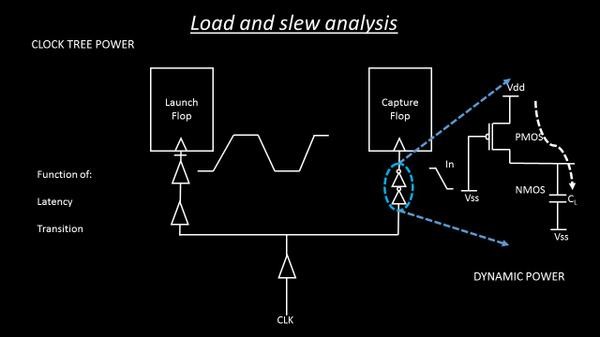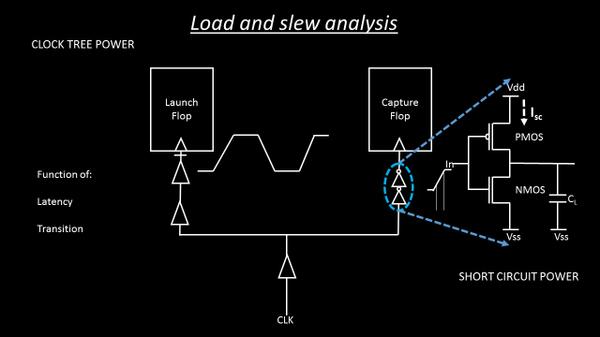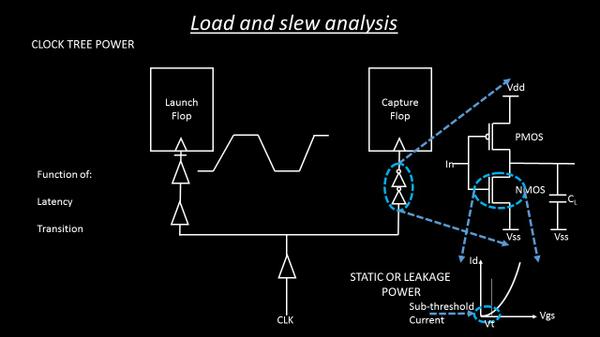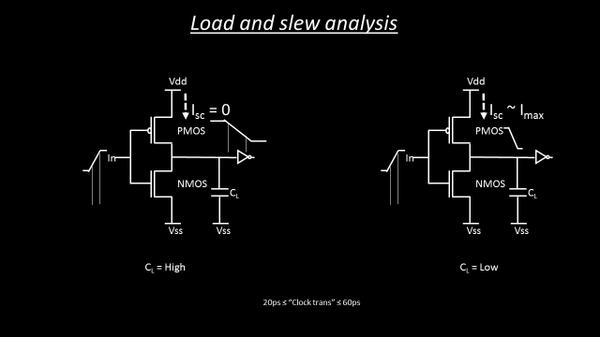I am sure you must have…. This blog will just walk you through the reasons using cool images from my latest course on “Static Timing Analysis – Part 2”. I will just mention some theory, and you can easily figure out the reason
1) Dynamic Power:
In the below image, once input of inverter switches from logic ‘1’ to logic ‘0’, your PMOS turns ON, and the output capacitance charges. Now, as we know, charging and discharging or capacitor is nothing but flow of charge or current from VDD to Capacitance OR from Capacitance to GND. This kind of flow of current is categorized into ‘Dynamic Power’. Notice one thing over here, the word ‘switches’ which is nothing but ‘transition’ or ‘slew’. I will get back to this in the end of this blog

2) Short Circuit Power:
In below image, when input logic switches from logic ‘0’ to logic ‘1’, for a momentarily period, during the transition period, both PMOS and NMOS turns ON, and due to that, there is a direct path from VDD to GND, and hence there’s a flow of current from supply to ground. These results into another category of power called as ‘Short Circuit Power’. Again notice a thing over here, the word ‘switches’, which is again, nothing but ‘transition’ or ‘slew’ . I will get back to this, again, by end of this blog

3) Subthreshold static or leakage power:
In the below image, whenever the inputs are at static voltage like ‘VDD’ or ‘GND’, then switches from one state to another, and again switches back to static state, ideally, there should be zero flow of current through the transistors. But, that doesn’t happen in real scenario, due to residual electrons still flowing through the devices. These flow of electrons, leads to another category of current, called sub-threshold current (as this is current flowing through transistors below threshold voltage), and power dissipation due to subthreshold current is referred to as ‘Static or Leakage Power’. Again, notice a thing over here, the word ‘switches’, which is again, nothing but ‘transition’ or ‘slew’

Now in all above cases, the capacitance and hence the transition, plays a very important role. If the capacitance (and hence the transition) goes beyond certain limits, that have huge and adverse impact (sometimes, even multiplicative) effect on your devices, and today’s smart phones or laptops can’t have some much power dissipation when our whole world depends on it. This is depicted in image below:

Imagine, you are sending friendship request on Facebook to your very important friend and you battery switches off just before you click the ‘Add as Friend’ button….What a shame? 🙂
Just as humans have their limits on everything, even the transistors and hence the entire chip has their limits. Too much of something is not good. And that brings me to a very important quote mentioned by ‘Albert Einstein’
“The difference between genius and stupidity is; genius has its limits”
So be a genius…and enjoy the blog …
Happy Learning…..
